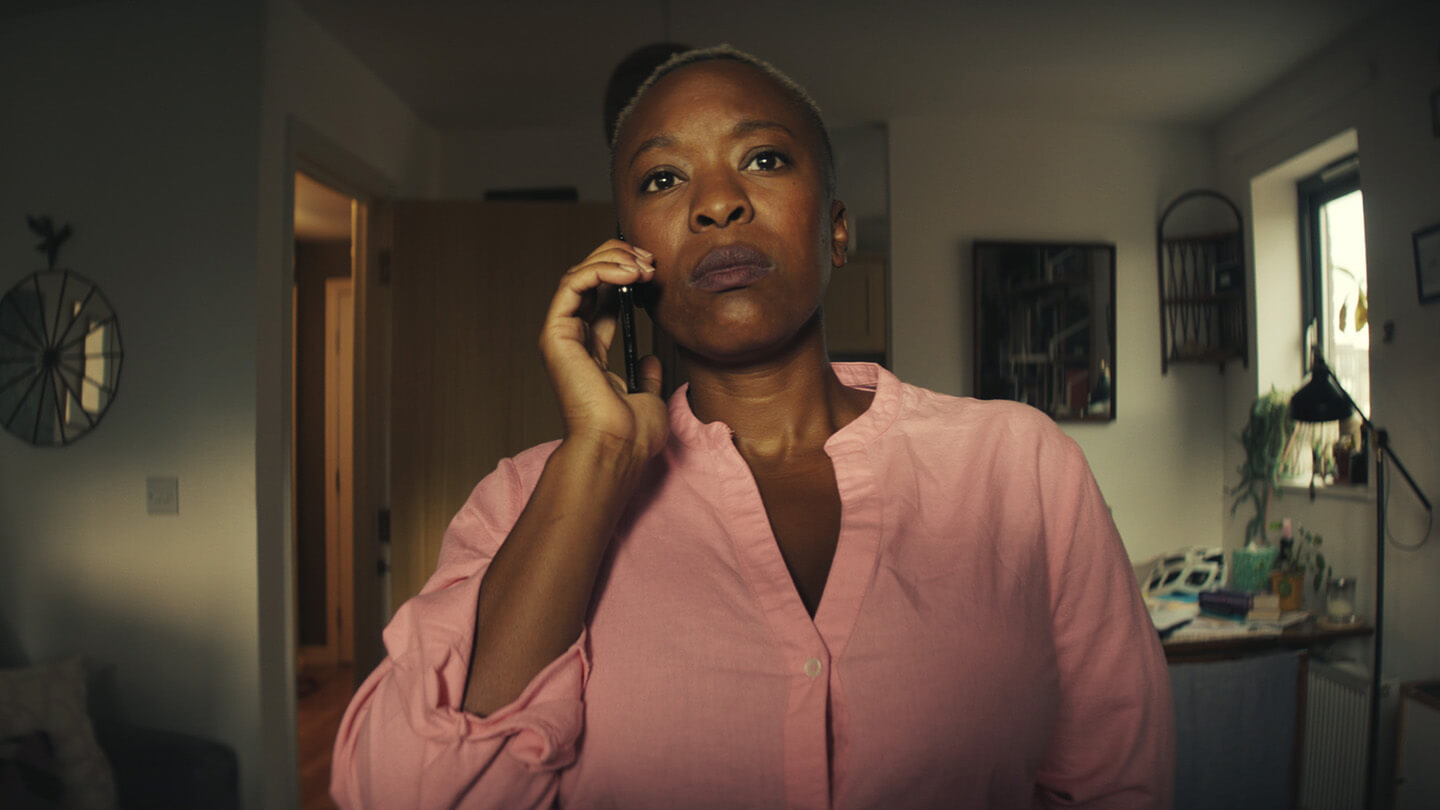Matt René’s What We Did Yesterday splits the narrative into three parts, each led by one of its three characters. The film uses visual cues and continuous movement than dialogue to develop individual narratives as the truth of the previous night waits to be seen.
Opening on a coffee table cluttered with the remnants of the night before, a series of shots take in the signifiers of the house’s inhabitants. Someone plays the guitar, someone has long hair, someone’s work requires a lanyard, and so on. The first character is introduced. A man, Jake (Matt Kennard), rushing to work. Lanyard on, files in, last night’s leftovers as breakfast. This is all we see of him. His wife (Dominique Moore), who returns from a trip, is the second character and the protagonist of the film. Conspicuously lacking the long hair that would require the hair clutch on the couch, Rhiannon has come home a day early.
The joy of homecoming is cut short at the sight of the mess Jake has left behind. No one in this film sits down. In the process, the film seems to map out the whole house. Unbeknownst to the viewer, the foundations of the climax are being laid down. The unceasing motion is relayed from character to character until the narrative comes to a dramatic (but skillfully muted) halt. Indeed, restraint is the film’s best feature. When Rhiannon discovers damning proof against Jake, her response (Moore delivers an impressive performance) is almost as quiet as the humble, offending object sitting in plain view. The whole truth is allowed to develop in its own time, where the audience is outpaced by Rhiannon—the relatively slow move out of incomprehension is a thrill in itself.
The third and final character, Sophie (Harriet Kelleher) appears almost like a ghost. Unlike Jake and Rhiannon, who have independent segments, Sophie appears like a signal interference just as Rhiannon is making a crucial phone call. The former makes her appearance through fragmented lines intercutting Rhiannon’s call. So alien is her presence that she does not even appear in the same form. Instead of the film’s camera, Sophie is seen through her phone camera: vertical frame and pixelated image. The effect is initially startling and then as she begins to despair, it is unsettling.
What We Did Yesterday is excellent for the way it works itself into a mystery with shades of horror. The sparseness of dialogue allows the viewer to pay close attention to Rhiannon as she travels the length from happy, discontented, dismayed, angry, and finally, to plain disappointed. The last one is left to be inferred through the film’s closing image, once again asking the viewer to think and imagine based on restrained cues. By doing so, the film has taken what is usually dramatised and hence overdone and created subtlety, heart, and a text worth parsing.
Watch What We Did Yesterday Short Film Trailer
What We Did Yesterday: Replacing Vacuous Broad Strokes with Intricate Groundwork
-
Direction
-
Cinematography
-
Screenplay
-
Editing
-
Music
